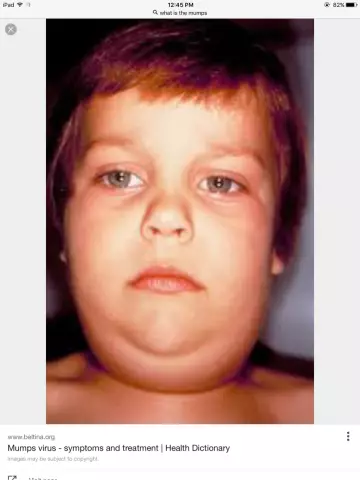- Author Rachel Wainwright [email protected].
- Public 2023-12-15 07:39.
- Last modified 2025-11-02 20:14.
Dromomania
The content of the article:
- Causes
- Kinds
- Stages
- Signs
- Diagnostics
- Treatment
- Prevention
Dromomania (car bonding, poriomania) is a mental disorder consisting in the patient's irresistible desire to leave home. Moreover, he usually does not have a predetermined goal, a developed route and does not give an account of the possible consequences of his act.

Dromomania - an irresistible desire to leave home
Causes
The main causes of the development of dromomania:
- epilepsy;
- schizophrenia;
- obsessive-compulsive personality disorder;
- hysterical personality disorder;
- sensory hunger (lack of experience);
- prolonged severe stress.
Dromomania often occurs in adolescents. In this case, the causes of pathology are:
- exorbitant loads;
- family conflicts;
- the desire to prove to others their significance and solvency;
- refusal to fulfill certain responsibilities;
- disturbed perception of the border between reality and play, fantasy.
Kinds
Depending on the reasons that caused the patient to leave home, there are two types of dromomania:
- clinical. It is based on organic brain damage and mental illness;
- false. Typical for adolescents, it occurs under the influence of traumatic situations in the family or school.
Stages
In the clinical course of dromomania, there are several stages replacing each other:
- The reactive stage is the initial stage of the formation of a psychopathological syndrome, the patient's first escape from home. Usually, the escape does not last long, and after returning home, the person continues to lead the usual way of life, but at the same time in his subconscious the mechanism of "escape" is fixed in response to a stressful situation.
- Anchoring stage (intermediate phase). There is a gradual formation of the habit of vagrancy. The patient loses the ability to resist the urge to escape. The duration of episodes of vagrancy increases, they occur more and more often. During this period, symptoms of bipolar depression are often determined.
- Final stage (final stage). Patients lose the ability to control their impulse impulses. During an episode of vagrancy, they do not control their behavior, are not able to influence the train of thought, critically assess their behavior and state.
Signs
In the clinical picture of dromomania, several signs specific to this pathopsychological state can be distinguished:
- Waiting to escape. Before the episode of leaving home, patients fall into a state of nervous febrile excitement. They cannot think of anything else but the "necessity" of another escape. At the same time, they joyfully anticipate the euphoria that will arise immediately after leaving home.
- An irresistible sudden unconscious urge to escape. The desire to take another trip arises suddenly. As a result, a person leaves without saying a word to anyone, without finishing his affairs, without taking the necessary things with him. Wanderlust sometimes occurs at night, then patients leave the house in their nightgowns.
- Indifference to the details of the upcoming trip. Patients do not have a trekking plan. They do not take with them any change of clothes, no hygiene products, no money, no mobile phone, they don’t think about the fact that they can starve, freeze, get sick. While traveling, the sick may steal, cheat, or beg to meet their needs.
- Irresponsibility. During the escape period, patients leave for their irrational world, without thinking or even remembering their loved ones, unfinished work and their obligations.
- Lack of criticality to your condition. Patients suffering from dromomania are confident that running away from home is the normal way to resolve a conflict situation. Only after their anomalous passion is satisfied, they begin to realize the illogicality of their action. After returning home, a person experiences a feeling of shame in front of loved ones, but it does not last long, and after a while the craving for vagrancy arises again.

Dromophobic patients do not usually prepare to escape
Diagnostics
Diagnosis of dromomania is based on the characteristic clinical signs of psychopathology and psychiatric examination data. If you suspect organic brain damage, computed or magnetic resonance imaging, electroencephalography are shown.
Treatment
Early treatment for dromomania, starting immediately after the first episodes of vagrancy, provides the best results. Patients are prescribed tranquilizers, antidepressants, which can improve their emotional state, eliminate increased anxiety, and normalize sleep. But the main role in the treatment regimen for dromomania belongs to cognitive-behavioral therapy. She teaches the correct reaction to stressful situations, teaches relaxation skills, thereby relieving the painful craving for vagrancy.

Cognitive behavioral therapy plays a major role in the treatment of dromomania
Prevention
Prevention of the development of dromomania includes:
- caring and attentive attitude towards children;
- fostering a sense of responsibility in children;
- prevention of diseases and injuries of the brain;
- prevention of overwork and stressful situations.

Elena Minkina Doctor anesthesiologist-resuscitator About the author
Education: graduated from the Tashkent State Medical Institute, specializing in general medicine in 1991. Repeatedly passed refresher courses.
Work experience: anesthesiologist-resuscitator of the city maternity complex, resuscitator of the hemodialysis department.
The information is generalized and provided for informational purposes only. At the first sign of illness, see your doctor. Self-medication is hazardous to health!






